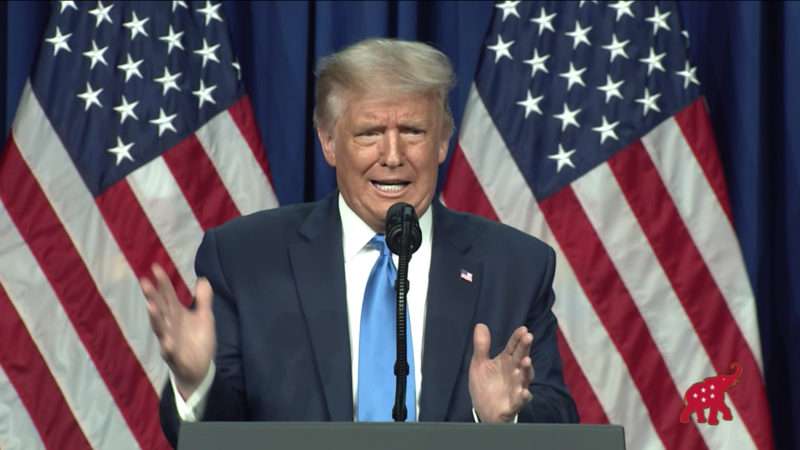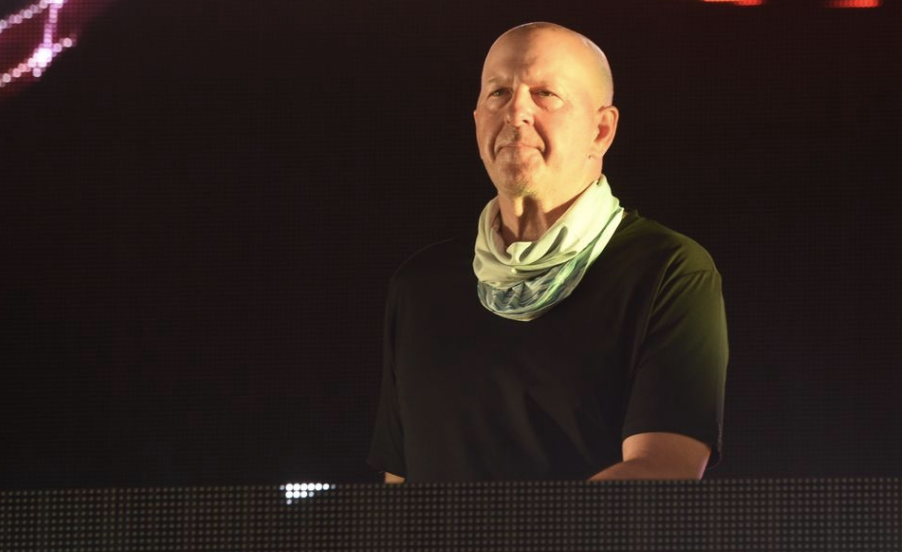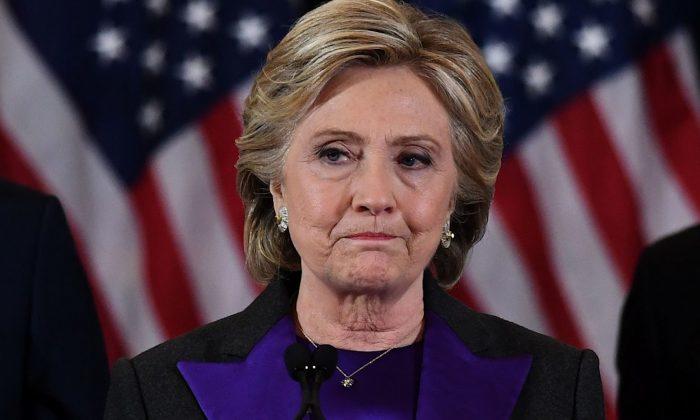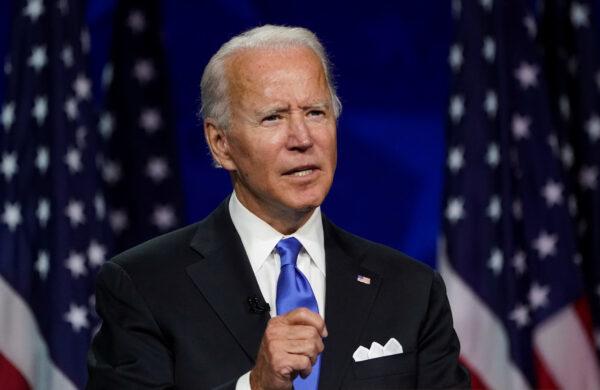
On the first night of the Republican National Convention, Donald Trump surrounded himself with a handful of regular Americans who have been involved in pandemic response, including a trucker who hauled steel utilized for hospital beds.
“Oh wow, that’s fantastic. Well, congratulations. I love the truckers. They’re on my side,” Trump ad-libbed. The conversation was recorded and edited, so what Americans saw was what the GOP wanted them to see. “I think all of them, frankly. I think pretty much all of them.”
It was the kind of impolitic throwaway line than in 2015 or 2016 would have led to minor gasps, some involuntary laughter, and not a small amount of audience thrill—wait, could you imagine an actual president saying this? It’s the stuff of Hollywood pictures for nearly a century: A guy who talks and teases like a regular Joe instead of speechifying and oozing like a polished pol upends Washington through his Everyman straight talk.
But that fantasy works best as fantasy, as something tantalizing to contemplate, whether in two-hour fictions or two-week flings at the top of primary polls, rather than day after day in a position of power during a time of national crisis. We’re happy (well, happy might be too strong a word) to imagine Warren Beatty rapping the unvarnished truth about corporate America cock-blocking socialized medicine, but lines such as “If you don’t put down the malt liquor and chicken wings and get behind somebody other than a running back who stabs his wife, you’re NEVER gonna get rid of somebody like me,” would probably begin to wear thin around Year Four.
The Republican National Convention is providing constant reminders that this uniquely needy and frequently funny American character is no longer the brick ready to be thrown through the White House window, no longer the Elephant Man being drafted to disrupt the alleged beauty pageant of politics, but rather the chief executive sitting atop a mammoth executive branch of the world’s most powerful country. As Mojo Nixon could testify, ribald satire plays much better on the outside looking in.
It was silly to think a 70-year-old who’d courted public attention for four decades would somehow change his spots once in office, and so he hasn’t. If you built a drinking game out of RNC speakers ladling out hyperbolic, coke-shooting-from-your-nose praise on the president, you’d be dead before midnight each day.
“Just imagine what 2020 would have looked like fighting for your life without Donald Trump fighting for it too,” volunteered Trump health care advisory board member Natalie Harp Monday. “In January, there would have been no China travel ban. Millions would have died.”
That claim, based on a much-criticized March study that assumed a worst-case, never-remotely-possible scenario of “no intervention” against the virus, belonged nowhere near the White House communications department five months ago, let alone near the top of a much-watched televised event in late August. But it surely pleased the boss, is so often—and so embarrassingly—the point.
“He ended once and for all the policy of incarceration of black people,” claimed George state Rep. Vernon Jones Monday. Big, if true. (It’s not.)
“Our president,” asserted Cuban immigrant Maximo Alvarez, “is just another family man,” which is arguably the most elastic definition of family values since Big Love.
“He has,” heralded Afghanistan War vet Sean Parnell, “fiercely defended the besieged First and Second Amendment.” The latter of which is debatable and the former of which is the inverse of the truth.
Hyperbole and hero-worship are baked into politics. And the hubris can go sky high when the protagonists at the center begin to smoke their own supply.
“I am absolutely certain,” Barack Obama (in)famously said in his nomination acceptance speech at the 2008 Democratic National Convention, “that generations from now, we will be able to look back and tell our children that this was the moment when we began to provide care for the sick and good jobs to the jobless; this was the moment when the rise of the oceans began to slow and our planet began to heal; this was the moment when we ended a war and secured our nation and restored our image as the last, best hope on Earth. This was the moment—this was the time—when we came together to remake this great nation.” Yuck.
But the messianism becomes a managerial malady when you build the expectation among staff underling, visiting VIP, and even little kids that the ticket to Oval Office access is a convincing testimonial, preferably on live TV, to the greatness of the Great Man.
“So Jordan, if President Trump was standing right there, what would you say to him today about Right to Try?” Vice President Mike Pence asked 10-year-old Jordan McLinn, who suffers from Duchenne Muscular Dystrophy. McLinn hesitated a bit, but remembered his line. “Thank you for being a hero to everybody in the country.” We are coaching sick kids to make the president feel appreciated.
In this narcissickness, visible at most televised Cabinet meetings, Trump has no contemporary equal.
In nearly every chronicled breakdown of a Trump administration breakdown, from the January 2017 travel ban to the 2020 pandemic response, there has featured a dysfunctional trifecta of premature presidential braggadocio, advisers massaging information in ways to please their mercurial boss, and overmatched managers picked for reasons of politics and loyalty instead of competence and independence.
“I like this stuff. I really get it,” the president said March 6, a week before all coronavirus hell broke loose. “People are surprised that I understand it….Every one of these doctors said, ‘How do you know so much about this?’ Maybe I have a natural ability. Maybe I should have done that instead of running for president.” He also added, with almost cruel disregard for the truth, “Anybody who wants a test gets a test.” If that were true, six months later we would not be looking at more than 178,000 deaths.
All of this makes Trump’s unabashed and unprecedented nepotism inevitable. Eric Trump, who closed his speech Tuesday with a section addressed directly to his dad, said that sticking up for the Silent Majority “is a fight that only my father can win.” Echoed Tiffany Trump earlier, “My father is the only person to challenge the establishment, the entrenched bureaucracy, Big Pharma and media monopolies, to ensure that Americans’ constitutional freedoms are upheld and that justice and truth prevail.”
Monday night’s two most disturbing presenters were a power couple—Donald Trump Jr., and former Fox News co-host and legal analyst Kimberly Guilfoyle. Chewing up scenery in front of what appeared to be an audience of one, a red-eyed, pumped-up Trump Jr., gave a cult-like recommendation for how Americans can win the future: By “embracing the man who represents a bright and beautiful future for all.”
Guilfoyle, resembling a send-up of Evita Peron, doubled down on the AYFKM oversell of her current boss and possible future father in law: “He built the greatest economy the world has ever known,” she said, at a time of double-digit unemployment. “America, it’s all on the line,” she added. “President Trump believes in you, he emancipates and lifts you up to live your American dream.”
Such is the rhetoric of recently transformed autocracies, not mature republics.
I am never the target audience for this stuff, and it wouldn’t be the first time I have misjudged the public appetite for Trump’s shtick. But populism has a long history of making promises rarely deliverable by good ideas, let alone cronyist, l’etat c’est moi, big-government protectionism.
Donald Trump is campaigning against an American carnage he vowed four years ago to reverse. He’s running against socialism after jacking up federal spending in three years as much Barack Obama did in eight. And he’s telling the same jokes as king that he killed with as jester. Good management requires more than cracking wise, promoting sycophancy, and seeking scapegoats. And Americans have a little bit more on their plate right now than resentment toward coastal cancel culture and “cosmopolitan elites.” As a fellow eccentric ideologically promiscuous entertainer once sang, that joke isn’t funny anymore.
from Latest – Reason.com https://ift.tt/2Es4dL1
via IFTTT








